- Home
- Arthur C. Clarke
Islands in the Sky Page 7
Islands in the Sky Read online
Page 7
After this, I’m afraid, the Morning Star was deserted, particularly when we found that we could make some money giving a hand on the sets. The fact that we were all used to weightlessness made us very useful, for though most of the film technicians had been into space before, they were not very happy under zero g and so moved slowly and cautiously. We could manage things much more efficiently, once we had been told what to do.
A good deal of the film was being shot on sets inside the Orson Welles, which had been fitted up as a sort of flying studio. All the scenes which were supposed to take place inside a spaceship were being shot here against suitable backgrounds of machinery, control boards, and so on. The really interesting sequences, however, were those which had to be filmed out in space.
There was one episode, we gathered, in which Tex Duncan would have to save Miss Lorelli from falling helplessly through space into the path of an approaching planet. As it was one of Twenty-first Century’s proudest boasts that Tex never used stand-ins, but actually carried out even the most dangerous feats himself, we were all looking forward to this. We thought it might be worth seeing, and as it turned out we were right.
I had now been on the station for a fortnight and considered myself an old hand. It seemed perfectly natural to have no weight, and I had almost forgotten the meaning of the words “up” and “down.” Such matters as sucking liquids through tubes instead of drinking them from cups or glasses were no longer novelties but part of everyday life.
I think there was only one thing I really missed on the station. It was impossible to have a bath the way you could on earth. I’m very fond of lying in a hot tub until someone comes banging on the door to make certain I haven’t fallen asleep. On the station you could have only a shower, and even this meant standing inside a fabric cylinder and lacing it tight round your neck to prevent the spray from escaping. Any large volume of water formed a big globe that would float around until it hit a wall. When that happened, some of it would break up into smaller drops which would go wandering off on their own, but most of it would spread all over the surface it had touched, making a horrid mess.
Over in the Residential Station, where there was gravity, they had baths and even a small swimming pool. Everyone thought that this last idea was simply showing off.
The rest of the staff, as well as the apprentices, had come to take me for granted and sometimes I was able to help in odd jobs. I’d learned as much as I could, without bothering people by asking too many questions, and had filled four thick notebooks with information and sketches. When I got back to earth, I’d be able to write a book about the station if I wanted to.
As long as I kept in touch with Tim Benton or the commander, I was now allowed to go more or less where I liked. The place that fascinated me most was the observatory, where they had a small but powerful telescope that I could play with when no one else was using it.
I never grew tired of looking at the earth as it waxed and waned below. Usually the countries beneath us were clear of cloud, and I could get distinct views of the lands over which we were hurtling. Because of our speed, the ground beneath was rolling back five miles every second. But as we were five hundred miles up, if the telescope was kept tracking correctly you could keep an object in the field of view for quite a long time, before it got lost in the mists near the horizon. There was a neat automatic gadget on the telescope mounting that took care of this. Once you’d set the instrument on anything, it kept swinging at just the right speed.
As we swept around the world, I could survey in each hundred minutes a belt stretching as far north as Japan, the Gulf of Mexico and the Red Sea. To the south I could see as far as Rio de Janeiro, Madagascar and Australia. It was a wonderful way of learning geography, though because of the earth’s curvature the more distant countries were very much distorted, and it was hard to recognize them from ordinary maps.
Lying as it did above the Equator, the orbit of the station passed directly above two of the world’s greatest rivers, the Congo and the Amazon. With my telescope I could see right into the jungles and had no difficulty at all in picking out individual trees and the larger animals. The great African Reservation was a wonderful place to watch, because if I hunted around I could find almost any animal I cared to name.
I also spent a lot of time looking outward, away from earth. Although I was virtually no nearer the moon and planets than I was on earth—for at this altitude I was still only a five-hundredth of the way to the moon—now that I was outside the atmosphere I could get infinitely clearer views. The great lunar mountains seemed so close that I wanted to reach out and run my fingers along their ragged crests. Where it was night on the moon I could see some of the lunar colonies shining away like stars in the darkness. But the most wonderful sight of all was the take-off of a spaceship. When I had a chance, I’d listen to the radio and make a note of departure times. Then I’d go to the telescope, aim it at the right part of the moon, and wait.
All I’d see at first would be a circle of darkness. Suddenly there’d be a tiny spark that would grow brighter and brighter. At the same time it would begin to expand as the rocket rose higher and the glare of its exhausts lit up more and more of the lunar landscape. In that brilliant, blue-white illumination I could see the mountains and plains of the moon, shining as brightly as they ever did in daylight. As the rocket climbed, the circle of light would grow wider and fainter, until presently it was too dim to reveal any more details of the land beneath. The ascending spaceship would become a brilliant, tiny star moving swiftly across the moon’s dark face. A few minutes later, the star would wink out of existence almost as suddenly as it had been born. The ship had escaped from the moon and was safely launched on its journey. In thirty or forty hours it would be sweeping into the orbit of the station, and I would be watching its crew come aboard, as unconcernedly as if they’d just taken a ’copter ride to the next town.
I think I wrote more letters while I was on the station than I did in a year at home. They were all very short, and they all ended: “P.S. Please send this cover back to me for my collection.” That was one way of making sure I’d have a set of space-mail stamps that would be the envy of everyone in our district. I stopped when I ran out of money, and a lot of distant aunts and uncles were probably surprised to hear from me.
I also did one TV interview, a two-way affair, with my questioner down on earth. It seems there’d been a good deal of interest roused by my trip to the station, and everyone wanted to know how I was getting on. I told them I was having a fine time and didn’t want to come back for a while, at any rate. There were still plenty of things to do and see, and the Twenty-first Century film unit was now getting into its stride.
While the technicians were making their preparations, Tex Duncan had been learning how to use a space suit. One of the engineers had the job of teaching him, and we learned that he didn’t think much of his pupil. Mr. Duncan was too sure that he knew all the answers, and because he could fly a jet he thought handling a suit would be easy.
I got a ringside seat the day they started the freespace shots. The unit was operating about fifty miles away from the station, and we’d gone over in the Skylark, our private yacht, as we sometimes called her.
Twenty-first Century had had to make this move for a rather amusing reason. One would have thought that, since they had at great trouble and expense got their actors and cameras out into space, they had only to go ahead and start shooting. But they soon found that it didn’t work out that way. For one thing, the lighting was all wrong.
Above the atmosphere, when you’re in direct sunshine, it’s as if you have a single, intense spotlight playing on you. The sunward side of any object is brilliantly illuminated, the dark side utterly black. As a result, when you look at an object in space you can see only part of it. You may have to wait until it’s revolved and been fully illuminated before you can get a picture of it as a whole.
One gets used to this sort of thing in time, but Twenty-first Century
decided that it would upset audiences down on earth. So they decided to get some additional lighting to fill in the shadows. For a while they even considered dragging out extra floodlights and floating them in space around the actors, but the power needed to compete with the sun was so tremendous that they gave up the idea. Then someone said, “Why not use mirrors?” This idea would probably have fallen through as well, if somebody else hadn’t remembered that the biggest mirror ever built was floating in space only a few miles away.
The old solar power station had been out of use for over thirty years, but its giant reflector was still as good as new. It had been built in the early days of astronautics to tap the flood of energy pouring from the sun, and to convert it into useful electric power. The main reflector was a great bowl almost three hundred feet across, shaped just like a searchlight mirror. Sunlight falling upon it was concentrated onto heating coils at the focus, where it flashed water into steam and so drove turbines and generators.
The mirror itself was a very flimsy structure of curved girders, supporting incredibly thin sheets of metallic sodium. Sodium had been used because it was light and formed a good reflector. All these thousands of facets collected the sunlight and beamed it at one spot, where the heating coils had been when the station was operating. However, the generating gear had been removed long ago, and only the great mirror was left, floating aimlessly in space. No one minded Twenty-first Century using it for their own purposes if they wanted to. They asked permission, were charged a nominal rent, and told to go ahead.
What happened then was one of those things that seems very obvious afterward, but which nobody thinks of before-hand. When we arrived on the scene, the camera crews were in place about five hundred feet from the great mirror, some distance off the line between it and the sun. Anything on this line was now illuminated on both sides—from one direction by direct sunlight, from the other by light which had fallen on the mirror, been brought to a focus, and spread out again. I’m sorry if this all sounds a bit complicated, but it’s important that you understand the setup.
The Orson Welles was floating behind the cameramen, who were playing round with a dummy to get the right angles when we arrived. When everything was perfect, the dummy would be hauled in and Tex Duncan would take its place. Everyone would have to work quickly because they wanted the crescent earth in the background. Unfortunately, because of our swift orbital movement, earth waxed and waned so quickly that only ten minutes in every hour were suitable for filming.
While these preparations were being made, we went in the power station control room. This was a large pressurized cylinder on the rim of the great mirror, with windows giving a good view in all directions. It had been made habitable and the air-conditioning brought into service again by some of our own technicians—for a suitable fee, of course. They had also had the job of swinging the mirror round until it faced the sun once more. This had been done by fixing some rocket units to the rim and letting them fire for a few seconds at the calculated times. Quite a tricky business, and one that could be done only by experts.
We were rather surprised to find Commander Doyle in the sparsely furnished control room. For his part, he seemed a little embarrassed to meet us. I wondered why he was interested in earning some extra money since he never went down to earth to spend it.
While we were waiting for something to happen, he explained how the station had operated and why the development of cheap and simple atomic generators had made the place obsolete. From time to time I glanced out of the window to see how the cameramen were getting on. We had a radio tuned in to their circuit, and the director’s instructions came over it in a never-ending stream. I’m sure he wished he was back in a studio down on earth, and was cursing whoever had thought of this crazy idea of shooting a film in space.
The great concave mirror was a really impressive sight from here on its rim. A few of the facets were missing, and I could see the stars shining through, but apart from this it was quite intact—and, of course, completely untarnished. I felt like a fly crawling on the edge of a metal saucer. Although the entire bowl of the mirror was being flooded with sunlight, it seemed dark from where we were stationed. All the light it was collecting was going to a point about two hundred feet out in space. There were still some supporting girders reaching out to the focus point where the heating coils had been, but now they simply ended in nothingness.
The great moment arrived at last. We saw the air lock of the Orson Welles swing open and Tex Duncan emerged. He had learned to handle his space suit reasonably well, though I’m sure I could have done better if I’d had as much chance to practice.
The dummy was pulled away, the director started giving his instructions, and the cameras began to follow Tex. There was little for him to do in this scene except to make a few simple maneuvers with his suit. He was, I gathered, supposed to be adrift in space after the destruction of his ship and was trying to locate any other survivors. Needless to say, Miss Lorelli would be among them, but she hadn’t yet appeared on the scene. Tex held the stage—if you could call it that—all to himself.
The cameras continued shooting until the earth was half full and some of the continents had become recognizable. There was no point in continuing then, for this would give the game away. The action was supposed to be taking place off one of the planets of Alpha Centauri, and it would never do if the audience recognized New Guinea, India or the Gulf of Mexico. That would destroy the illusion with a bang.
There was nothing to do but wait for thirty minutes until earth became a crescent again, and its telltale geography was hidden by mist or cloud. We heard the director tell the camera crews to stop shooting, and everyone relaxed. Tex announced over the radio, “I’m lighting a cigarette—I’ve always wanted to smoke in a space suit.” Somebody behind me muttered, “Showing off again—serve him right if it makes him spacesick!”
There were a few more instructions to the camera crews, and then we heard Tex again.
“Another twenty minutes, did you say? Darned if I’ll hang round all that time. I’m going over to look at this glorified shaving mirror.”
“That means us,” remarked Tim Benton in deep disgust.
“O.K.,” replied the director, who probably knew better than to argue with Tex. “But be sure you’re back in time.”
I was watching through the observation port and saw the faint mist from Tex’s jets as he started toward us.
“He’s going pretty fast,” someone remarked. “I hope he can stop in time. We don’t want any more holes in our nice mirror.”
Then everything seemed to happen at once. I heard Commander Doyle shouting, “Tell that fool to stop! Tell him to brake for all he’s worth! He’s heading for the focus—it’ll burn him to a cinder!”
It was several seconds before I understood what he meant. Then I remembered that all the light and heat collected by our great mirror was being poured into that tiny volume of space toward which Tex was blissfully floating. Someone had told me that it was equal to the heat of ten thousand electric fires, and concentrated into a beam only a few feet wide. Yet there was absolutely nothing visible to the eye, no way in which one could sense the danger until it was too late. Beyond the focus, the beam spread out again, soon to become harmless. But where the heating coils had been, in that gap between the girders, it could melt any metal in seconds. Tex had aimed himself straight at the gap! If he reached it, he would last about as long as a moth in an oxyacetylene flame!
6 HOSPITAL IN SPACE
Someone was shouting over the radio, trying to send a warning to Tex. Even if it reached him in time, I wondered if he’d have sense enough to act correctly. It was just as likely that he’d panic and start spinning out of control without altering his course.
The commander must have realized this, for suddenly he shouted:
“Hold tight, everybody! I’m going to tip the mirror!”
I grabbed the nearest handhold. Commander Doyle, with a single jerk of those massive forear
ms, launched himself across to the temporary control panel that had been installed near the observation window. He glanced up at the approaching figure and did some rapid mental calculations. Then his fingers flashed out and played across the switches of the rocket firing panel.
Three hundred feet away, on the far side of the great mirror, I saw the first jets of flame stabbing against the stars. A shudder ran through the framework all around us; it was never meant to be swung as quickly as this. Even so, it seemed to turn very slowly. Then I saw that the sun was moving off to one side. We were no longer aimed directly toward it, and the invisible cone of fire converging from our mirror was now opening out harmlessly into space. How near it passed to Tex we never knew, but he said later that there was one brief, blinding explosion of light that swept past him, leaving him blinded for minutes.
The controlling rockets burned themselves out, and with a gasp of relief I let go of my handhold. Although the acceleration had been slight (there was not enough power in these small units to produce any really violent effect), it was more than the mirror had ever been designed to withstand, and some of the reflecting surfaces had torn adrift and were slowly spinning in space. So, for that matter, was the whole power station. It would take a long period of careful juggling with the jets to iron out the spin that Commander Doyle had given it. Sun, earth and stars were slowly turning all about us and I had to close my eyes before I could get any sense of orientation.
When I opened them again, the commander was busily talking to the Orson Welles, explaining just what had happened and saying exactly what he thought of Mr. Duncan. That was the end of shooting for the day, and it was quite a while before anyone saw Tex again.
Soon after this episode, our visitors packed their things and went farther out into space, much to our disappointment. The fact that we were in darkness for half the time, while passing through the shadow of the earth, was too big a handicap for efficient filming. Apparently they had never thought of this, and when we heard of them again they were ten thousand miles out, in a slightly tilted orbit that kept them in perpetual sunlight.

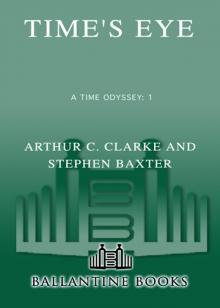 Time's Eye
Time's Eye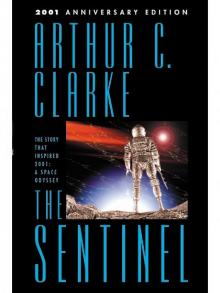 The Sentinel
The Sentinel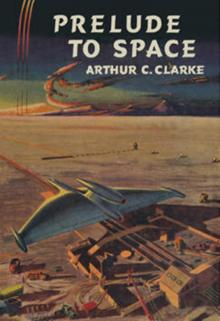 Prelude to Space
Prelude to Space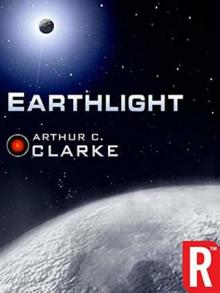 Earthlight (Arthur C. Clarke Collection)
Earthlight (Arthur C. Clarke Collection) 2001: A Space Odyssey
2001: A Space Odyssey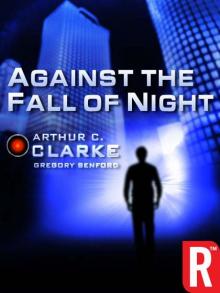 Against the Fall of Night
Against the Fall of Night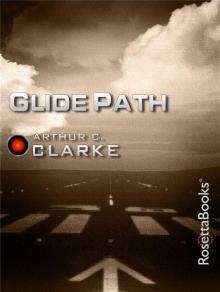 Glide Path
Glide Path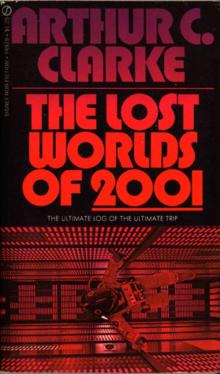 The Lost Worlds of 2001
The Lost Worlds of 2001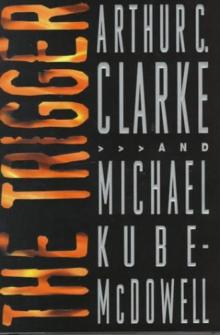 The Trigger
The Trigger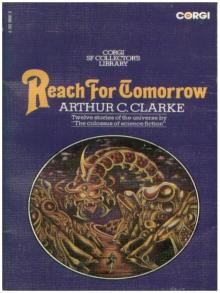 Reach for Tomorrow
Reach for Tomorrow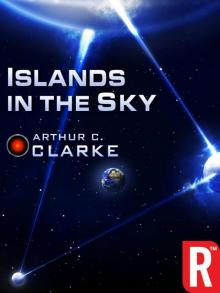 Islands in the Sky
Islands in the Sky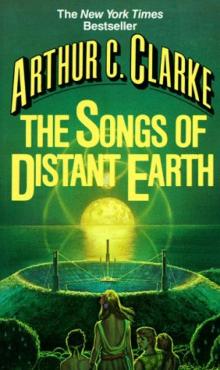 The Songs of Distant Earth
The Songs of Distant Earth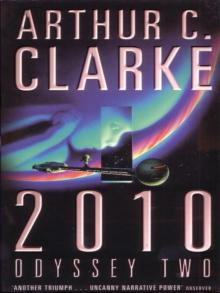 2010: Odyssey Two
2010: Odyssey Two Childhood's End
Childhood's End 3001: The Final Odyssey
3001: The Final Odyssey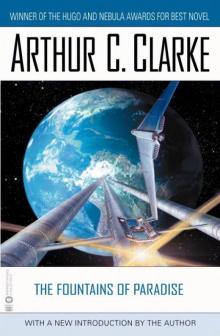 The Fountains of Paradise
The Fountains of Paradise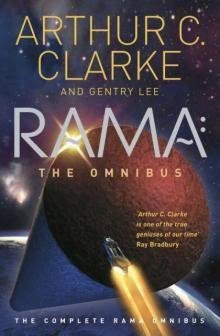 Rama: The Omnibus
Rama: The Omnibus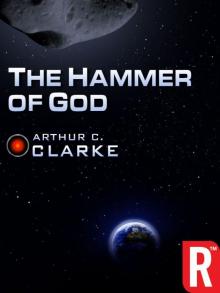 The Hammer of God
The Hammer of God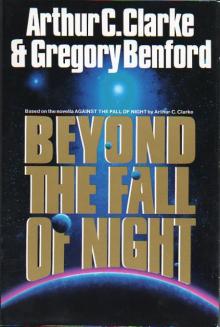 Beyond the Fall of Night
Beyond the Fall of Night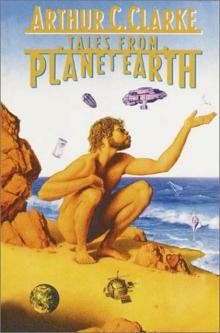 Tales From Planet Earth
Tales From Planet Earth 2061: Odyssey Three
2061: Odyssey Three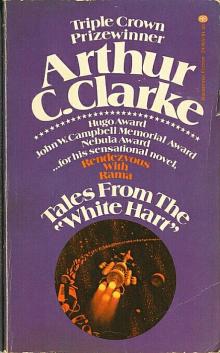 Tales From the White Hart
Tales From the White Hart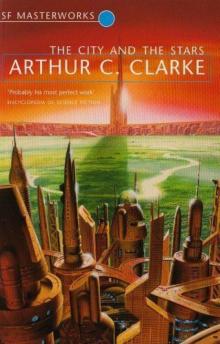 The City and the Stars/The Sands of Mars
The City and the Stars/The Sands of Mars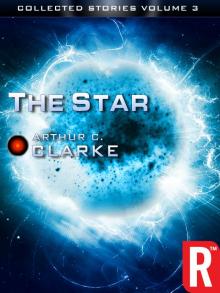 The Star
The Star Imperial Earth
Imperial Earth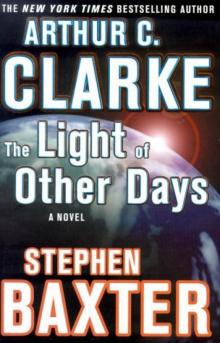 The Light of Other Days
The Light of Other Days Firstborn
Firstborn The Other Side of the Sky
The Other Side of the Sky Cradle
Cradle The Wind From the Sun
The Wind From the Sun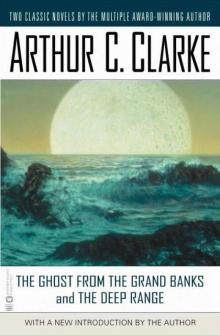 The Ghost From the Grand Banks and the Deep Range
The Ghost From the Grand Banks and the Deep Range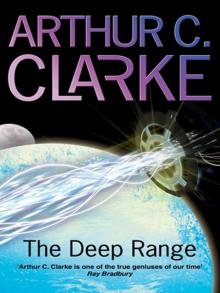 The Deep Range
The Deep Range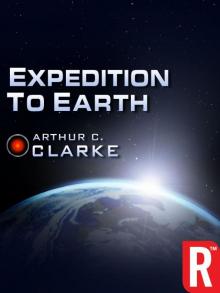 Expedition to Earth
Expedition to Earth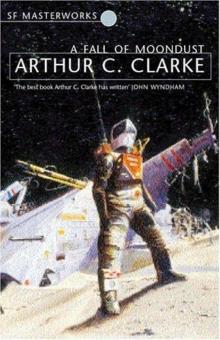 A Fall of Moondust
A Fall of Moondust Dolphin Island (Arthur C. Clarke Collection)
Dolphin Island (Arthur C. Clarke Collection)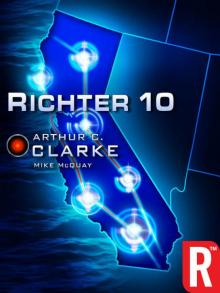 Richter 10
Richter 10 The City and the Stars
The City and the Stars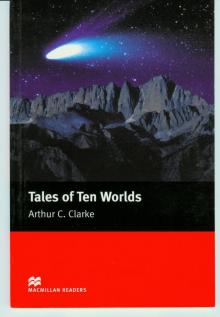 Tales of Ten Worlds
Tales of Ten Worlds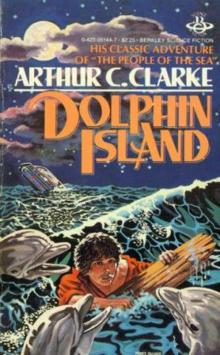 Dolphin Island
Dolphin Island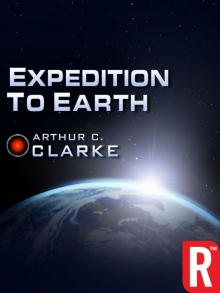 Expedition to Earth (Arthur C. Clarke Collection: Short Stories)
Expedition to Earth (Arthur C. Clarke Collection: Short Stories) Sunstorm
Sunstorm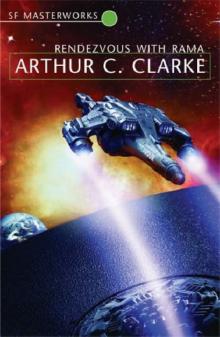 Rendezvous with Rama
Rendezvous with Rama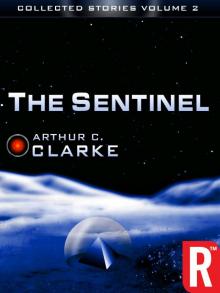 The Collected Stories of Arthur C. Clarke
The Collected Stories of Arthur C. Clarke Trouble with the Natives
Trouble with the Natives Rama Revealed r-4
Rama Revealed r-4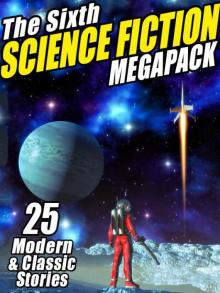 The Sixth Science Fiction Megapack
The Sixth Science Fiction Megapack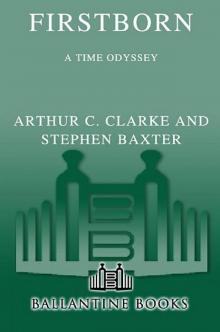 Firstborn to-3
Firstborn to-3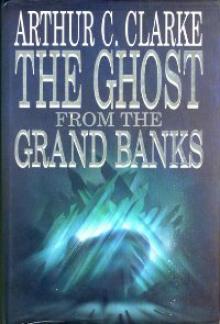 The Ghost from the Grand Banks
The Ghost from the Grand Banks Into the Comet
Into the Comet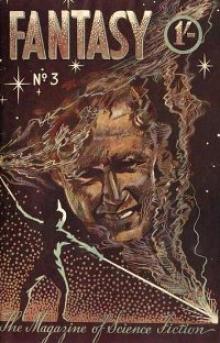 The Fires Within
The Fires Within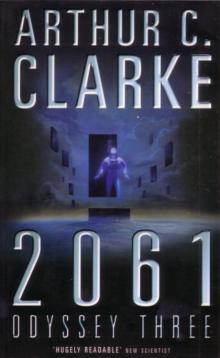 2061: Odyssey 3
2061: Odyssey 3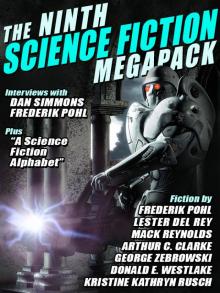 The Ninth Science Fiction Megapack
The Ninth Science Fiction Megapack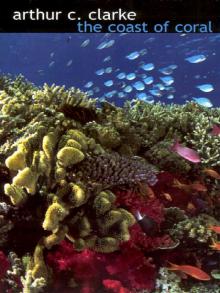 The Coast of Coral
The Coast of Coral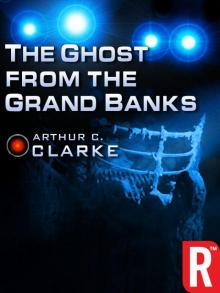 The Ghost from the Grand Banks (Arthur C. Clarke Collection)
The Ghost from the Grand Banks (Arthur C. Clarke Collection)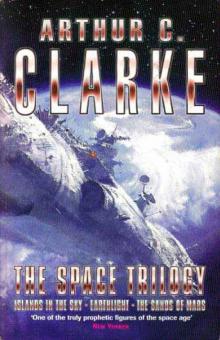 The Space Trilogy
The Space Trilogy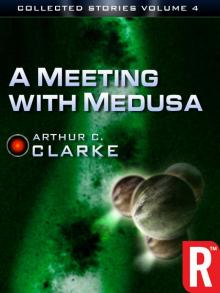 A Meeting With Medusa
A Meeting With Medusa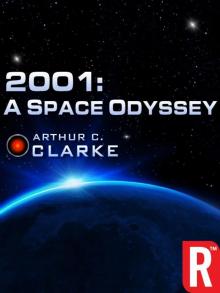 2001: A Space Odyssey (Arthur C. Clarke Collection: The Odyssey)
2001: A Space Odyssey (Arthur C. Clarke Collection: The Odyssey)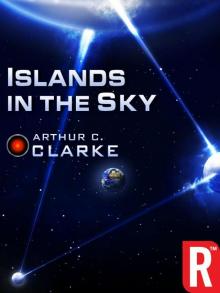 Islands in the Sky (Arthur C. Clarke Collection)
Islands in the Sky (Arthur C. Clarke Collection)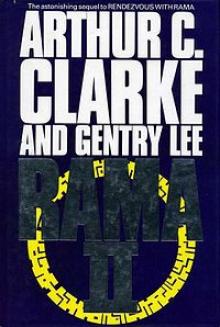 Rama II r-2
Rama II r-2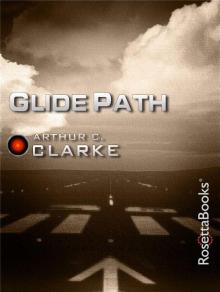 Glide Path (Arthur C. Clarke Collection)
Glide Path (Arthur C. Clarke Collection)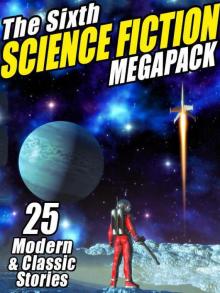 The Sixth Science Fiction Megapack: 25 Classic and Modern Science Fiction Stories
The Sixth Science Fiction Megapack: 25 Classic and Modern Science Fiction Stories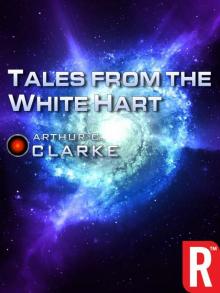 Tales from the White Hart (Arthur C. Clarke Collection: Short Stories)
Tales from the White Hart (Arthur C. Clarke Collection: Short Stories) The Reluctant Orchid
The Reluctant Orchid